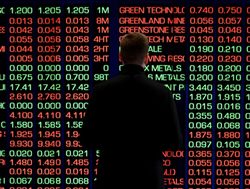Sharon Klyne* looks at how superannuation funds are managing impact investing.
 While impact investing has grown rapidly, investors lack the tools and data to effectively and consistently measure the impact of their investments.
While impact investing has grown rapidly, investors lack the tools and data to effectively and consistently measure the impact of their investments.
According to estimates by the Global Impact Investing Network, the size of the impact investing market in 2022 hit US$1 trillion ($1.6 trillion), spurred on by investors’ desire to achieve positive societal outcomes while earning attractive returns on capital.
In Australia, fund managers are seeing super funds re-allocating to strategy after a hiatus.
“Super funds were not particularly interested in impact investing a couple of years ago. Their focus was more on regulatory and competitive landscape issues,” said Tim Macready, chief investment officer at impact fund manager and advisor Brightlight Group.
Brightlight manages around $500 million of assets.
“But interest is now picking up again and I’d expect to see super funds starting to reallocate again.”
Hindering market growth
One of the key issues hindering the market is the lack of consistent data, tools and standards to measure impact.
Though the problem is not a new one according to Philippe Zaouati, chief executive of portfolio manager Mirova, an affiliate of Natixis Investment Managers with €25.5 billion ($40 billion) of assets under management.
“It’s always difficult to measure the impact but I’ve been hearing about the lack of data and lack of consistency of data for 20 years or so.
“We don’t lack of data, we probably lack more analysis of data,” he said.
Cbus’ chief investment officer Kristian Fok said getting the right information is important.
“In the past, there was a lack of information.
“How we process and consume that information [around responsible investing] is going to be pretty critical.”
The $70 billion super fund recently appointed Rosalind Mckay as head of responsible investment and she has been tasked to develop responsible investment frameworks including what information is needed.
The fund already uses the GRESB Foundation methodology which sets benchmarks and global standards for measuring ESG for the real estate and infrastructure industry.
There is growing demand from investors for more impact measurement frameworks and metrics to be applied and the lack of consistency is challenging for investors and portfolio managers.
“One investor might care about job creation, one investor might care about poverty alleviation, another might care about something else,” said Macready.
“Each of them is asking for cases that have precise metrics in the way that they want to make an impact and that can be challenging when we’re dealing with multi asset portfolios, where managers don’t necessarily all report on the same metrics.”
The finalisation of Australia’s sustainable finance taxonomy – a set of definitions of activities or assets that are considered sustainable – will provide more clarity on calculating impact.
“Once you have those frameworks, you have a set rules and measurements that can actually also legitimately help you identify the impact [of your investments],” said Fok, who is also acting chair of the Australian Sustainable Finance Institute that is developing the taxonomy.
Attribution issue
Attribution is another problem with inconsistency in terms of how impact investments and impact fund managers claim their share of impact.
“We’re seeing the equity manager will claim the impact of the total percentage of equity and where they do not adjust for their share of ownership because that can be really complex in the capital structure.
“So that attribution piece is actually really challenging as well,” said Brightlight’s Macready.
This is one of the reasons UK-based green bond fund manager Affirmative Investment Manager limits its investments to the labelled green bond market explained Katie House, partner – sustainability.
“We have specifically chosen to focus our attention on labelled bonds because it gives us an additional layer to be able to measure our impact.
“We look for the impact through the use of proceeds of the bond,” she said.
“It’s not enough to take the label at face value, we definitely still need to do our research and that’s both on the use of proceeds side and also on the issuer side.”
Even in the measurement of greenhouse gases, which has established datasets and science-based methodology, calculating the indirect carbon emissions of a company’s value chain, or scope 3 emissions, continues to confound.
“Emissions information, particularly scope 1 and 2, the data is pretty good but when you start looking at scope 3, data provision is much more variable and much more often estimated,” said House.
*Sharon Klyne, author at Investment Magazine.
This article first appeared at investmentmagazine.com.au.










